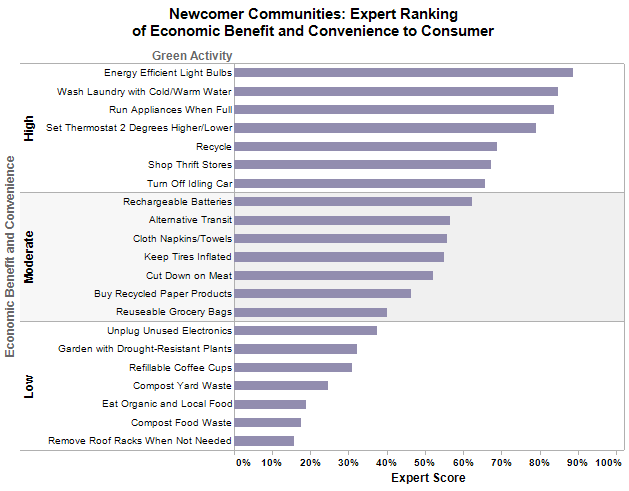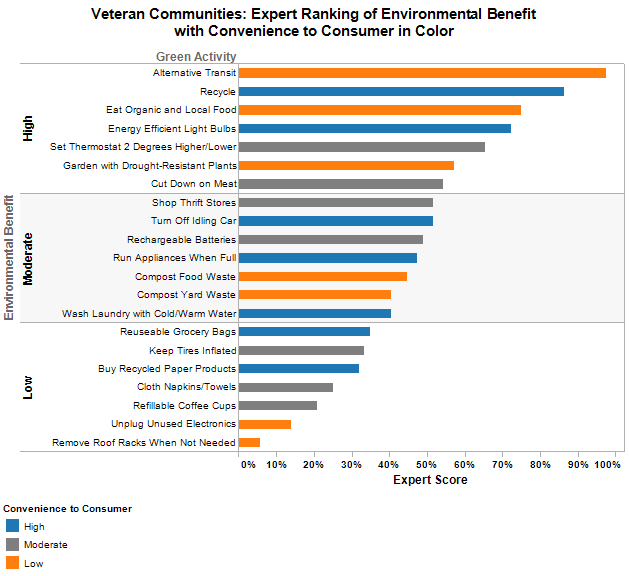Executive Summary
Which “green” activities are consumers performing in their everyday lives? Activities that-
– Save them money?
– Are easy to do?
– Are the most beneficial to the environment?
– Some combination of the three?
By combining insights from a recent survey of consumer behavior with expert opinion on green activities I found that:
– Activities that experts rank as the most beneficial for the environment are not always performed frequently by consumers.
– Economic benefit to the consumer is a stronger predictor of frequently-performed activities than environmental benefit.
– However, convenience to the consumer is the best predictor of green behavior!
Decision-makers for sustainability programs can tailor this method to their particular location by:
– Compiling a list of green activities specific to their region.
– Surveying local consumers and experts.
– Altering which dimensions are included in assessing the importance of various green activities.
“Newcomer” communities can maximize the impact of launching their green programs by:
– Prioritizing activities that are convenient and economical for the consumer.
– Motivating consumers with educational programs and incentives.
– Waiting until the environmental program has gotten off the ground before encouraging activities that are low in convenience and economic benefit- unless they can be financially subsidized.

“Veteran” communities can prioritize the activities using environmental benefit:
– Activities that are most convenient can be financially penalized for non-compliance.
– Less convenient activities can have incentives for performance.

A newer article contains an interactive dashboard, allowing you to explore the topic in detail.
Securely share R shiny apps
Develop R shiny apps
All on one dedicated, secure and powerful platform.